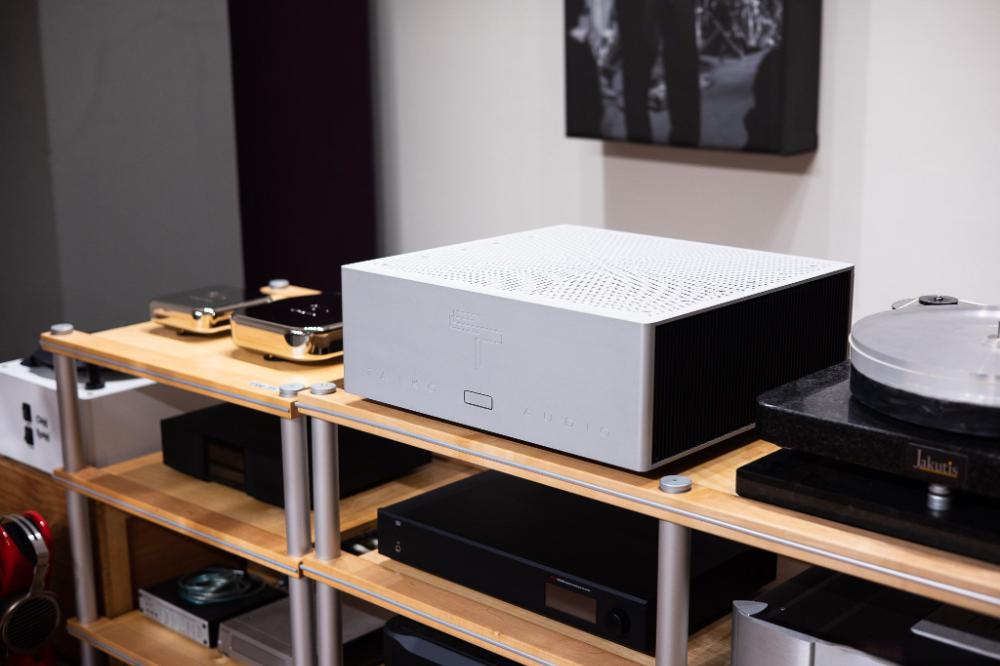
The Taiko Audio Extreme Music Server: Redefining High-End Digital Music Streaming
Music servers play a pivotal role in network digital streaming, yet they remain one of the most overlooked components in high-end audio systems. While their basic functionality mirrors that of ordinary computers, the profound impact of meticulous design on sonic performance is nothing short of transformative. Many astute audio manufacturers, including Taiko Audio, have recognized this critical truth. Since 2015, Taiko Audio has dedicated itself to this pursuit, culminating in the 2022 launch of the Extreme Music Server—a tour de force that represents the apex of their engineering philosophy. From fundamental hardware and software architecture to obsessive attention to minute details, this masterpiece stands as the definitive expression of what a music server can achieve.
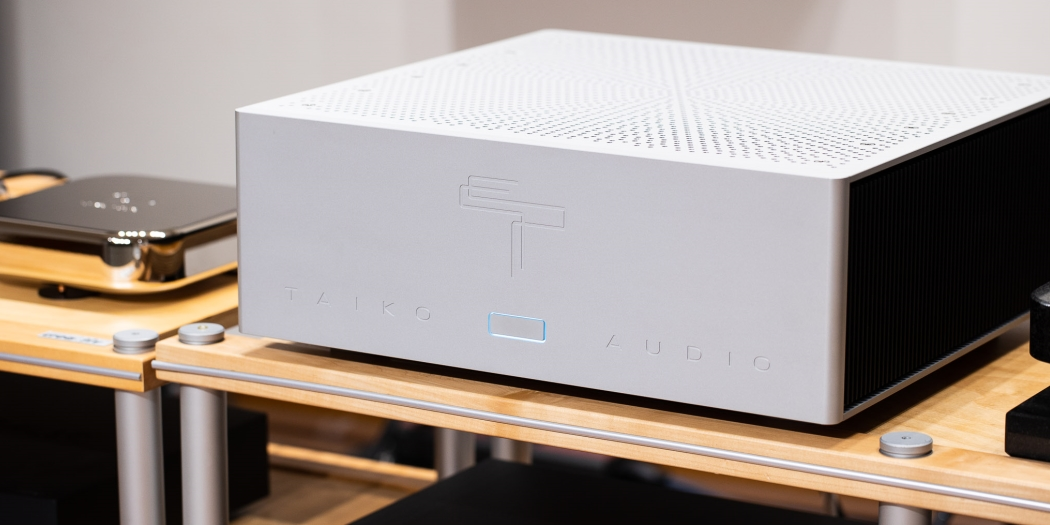
The Visionary Behind the Innovation
At the heart of Taiko Audio stands founder Emile Bok, whose company is headquartered in Oldenzaal, Netherlands. Bok's credentials are impeccable: he graduated from the University of Twente, one of the Netherlands' most prestigious academic institutions renowned for its computer science program. This university boasts an extraordinary IT research background—notably, the entire Booking.com team emerged from its halls. Following graduation, Bok spent 19 years at the University of Trento in Italy, specializing in server farm design, maintenance, and operating system optimization. This institution consistently ranked among the world's top 20 universities for server performance over the past two decades.
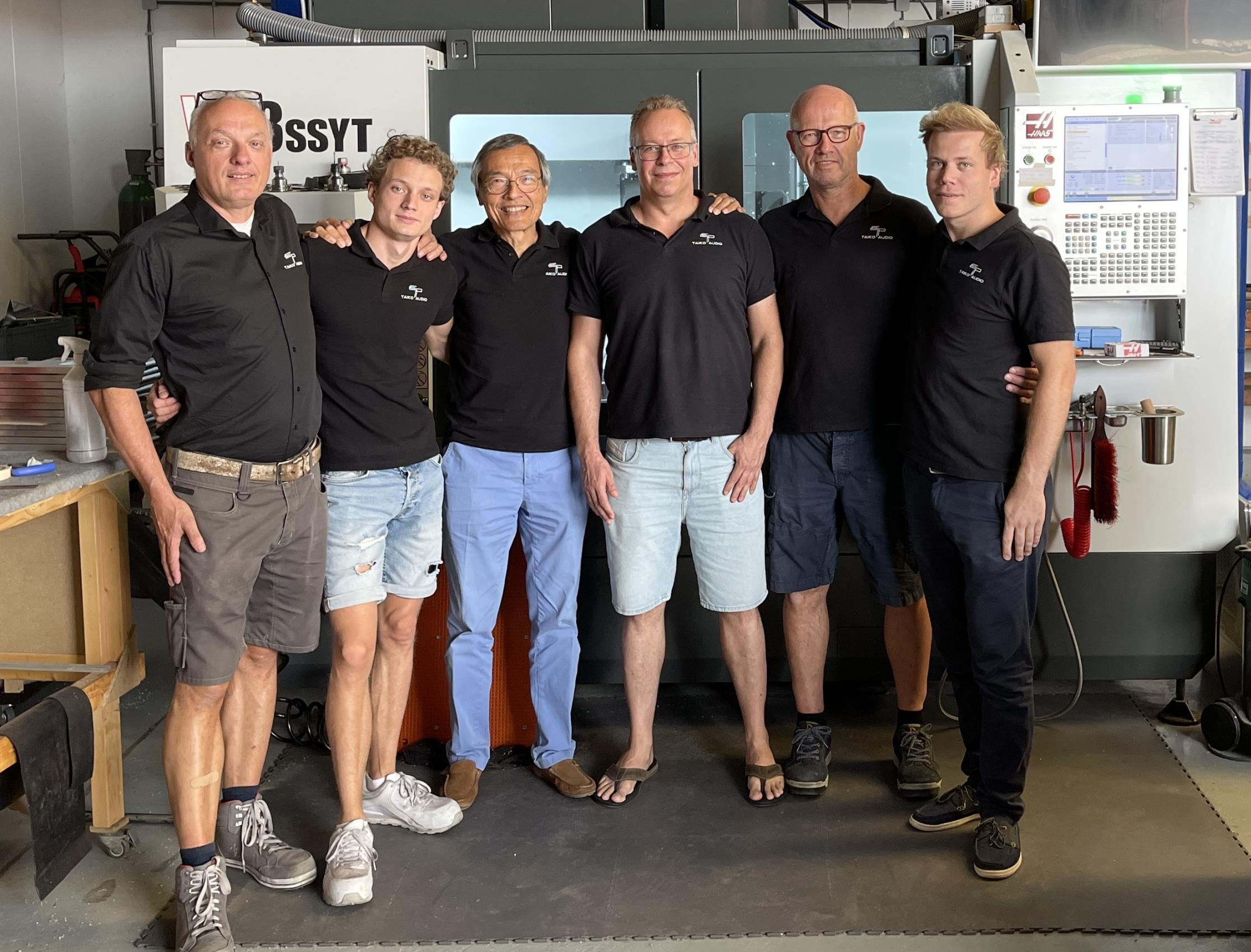
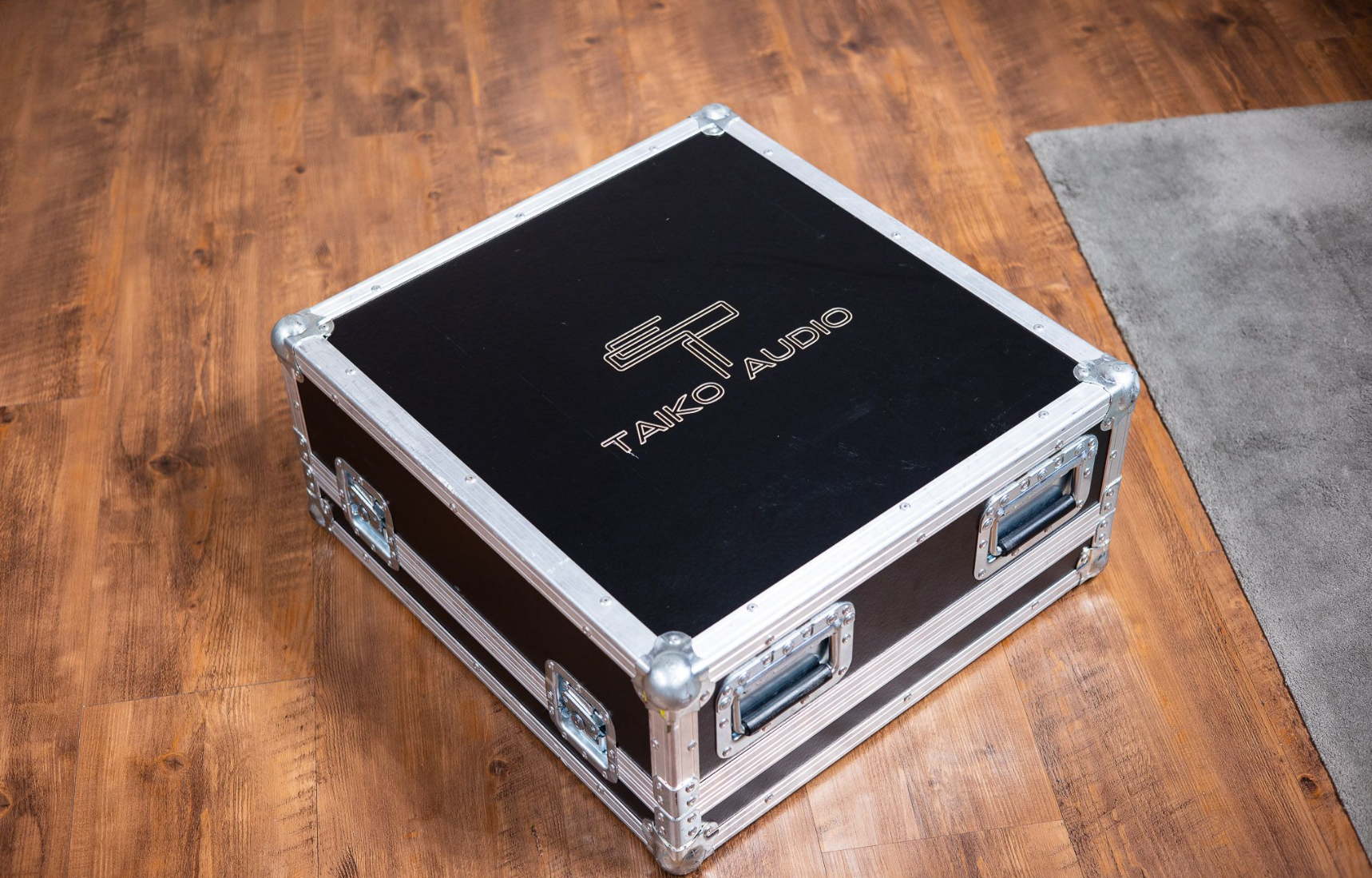
In essence, Emile immersed himself in the world's most elite IT academic institutions for over two decades, building invaluable expertise and networks that would prove instrumental in designing high-end music servers. His audiophile journey began early—at age 12, he worked in a Dutch loudspeaker factory surrounded by components, crossovers, and countless parts. Young Emile would listen intently to different components' sonic characteristics, developing his naturally gifted hearing that allows him to perceive high frequencies beyond most people's range—an invaluable asset in product development.

Bok began designing and manufacturing audio equipment in 2008. His partnership with Edward originated from their shared ability to quickly identify and resolve product issues during technical discussions. Edward naturally joined the Taiko Audio team, leading to the 2015 launch of the SGM (Sound Galleries Music Server). Edward subsequently left his university position to focus entirely on Taiko Audio's mission.

Engineering Excellence: The Extreme's Foundation
The Taiko Audio Extreme Music Server was specifically developed for network digital streaming, prioritizing sound quality, user experience, and ease of use. Since 2015, the team identified Roon as the premier software for browsing and managing music libraries, making Roon integration the cornerstone of their design philosophy. The Extreme employs a dual-CPU architecture: one processor handles Roon's complex computational tasks, while the other is dedicated exclusively to audio processing. This separation ensures that Roon's operations never interfere with sound quality or generate noise, while producing less heat and offering superior longevity compared to single-CPU designs.

Through extensive research, Taiko discovered that internal SSD storage significantly impacts sound quality. While conventional designs use motherboard DMI connections, the Extreme employs PCIe module connections that bypass the DMI entirely, connecting directly to the CPU. This approach delivers four times the speed of standard designs, reducing latency while dramatically lowering noise levels, resulting in a blacker background and more transparent, expansive soundstage. Intel VMD technology enables greater bandwidth through the PCIe interface.
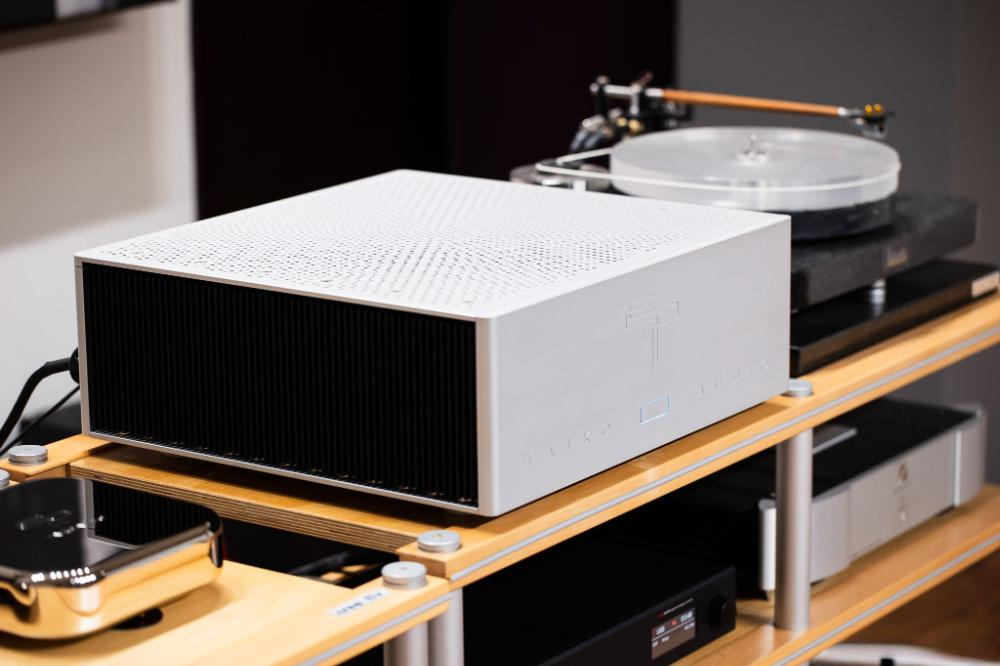
The Extreme accommodates 2TB to 64TB of SSD storage internally, eliminating the need for external NAS systems. When external music storage is required, Taiko recommends connecting portable drives via USB to the Extreme, as they believe NAS RAID architectures compromise sound quality.
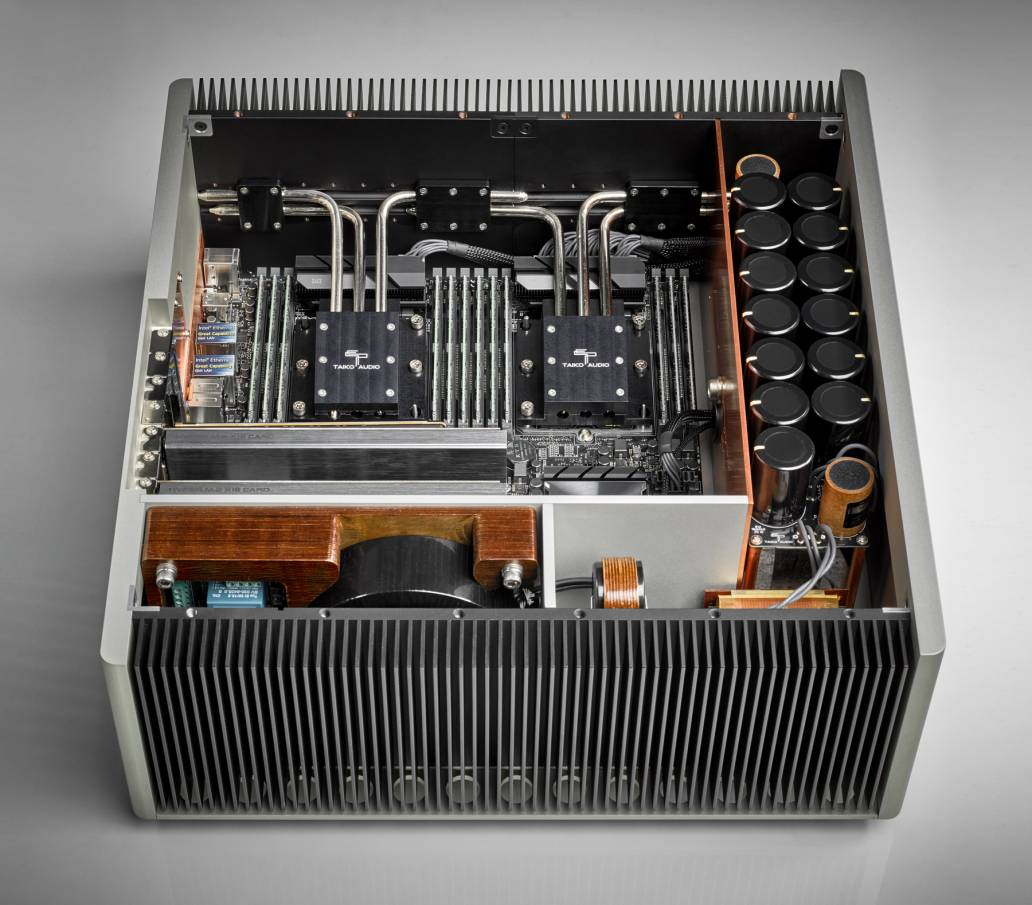
Memory Architecture: Precision at the Molecular Level
RAM refresh rates represent another critical factor affecting sound quality. To prevent data loss, RAM actively refreshes at specific frequencies, but frequent refreshing degrades sonic performance. Taiko selected manufacturer-screened Grade-A DIMM modules (integrated modules comprising multiple memory chips) where chip, capacitor, and resistor components match within 1% precision. This reduces current consumption by 50% for refresh-required burst currents, significantly lowering operating temperatures and enabling reduced refresh rates. The Extreme's 12 DIMM modules achieve extremely high bandwidth with minimal refresh noise.
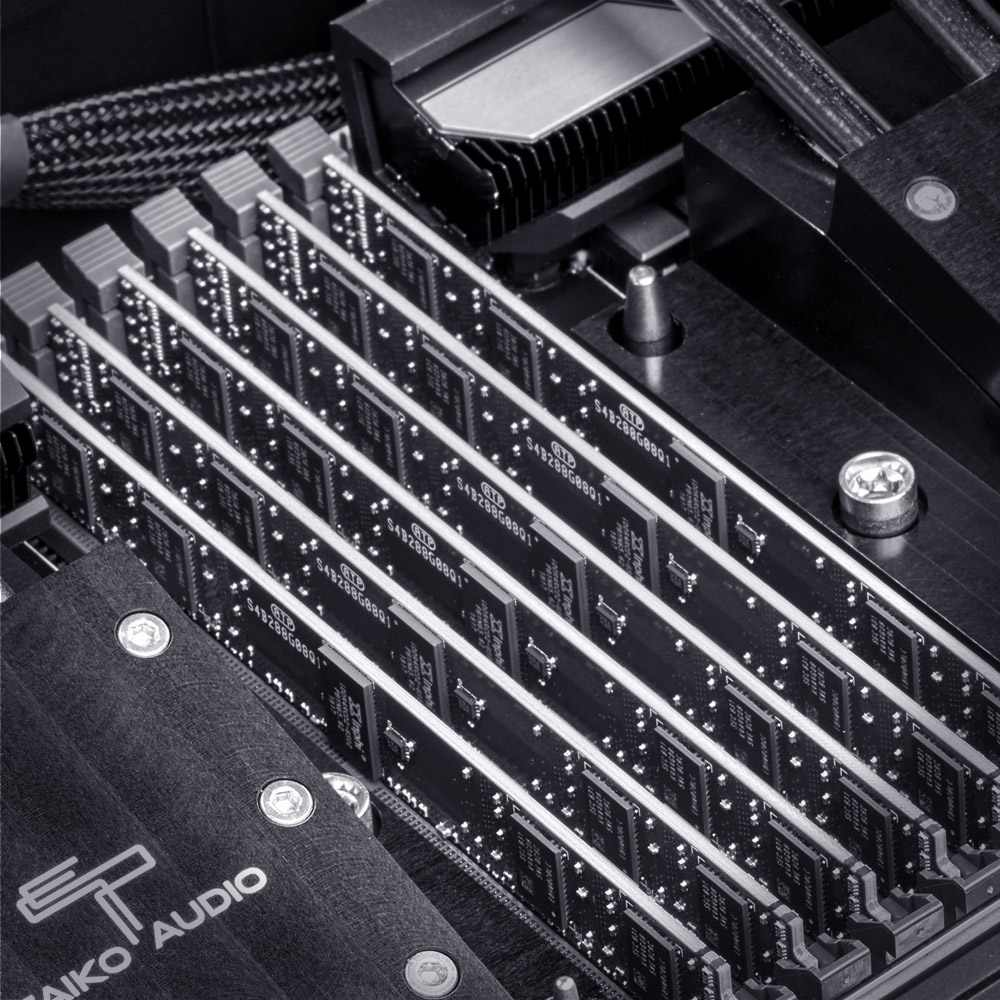
Bit-Perfect Output and System Optimization
The Extreme's digital output achieves bit-perfect accuracy, eliminating the need for upsampling music files. Under these conditions, system latency becomes the critical factor. Taiko ensures the Extreme maintains extremely rapid response times for every command, hence the seemingly over-specified computational power—this represents one method of maintaining sound quality. Powerful processing handles tasks quickly and effortlessly, maintaining consistent current consumption and lower EMI/RFI contamination. The operating system is streamlined to include only essential functions for music playback.
Power Supply: Linear Perfection
The Extreme features a custom 400-watt linear power supply designed specifically for its requirements, utilizing only the finest Mundorf and Duelund capacitors alongside Lundahl inductors. Anti-vibration design permeates the chassis, incorporating flexibility throughout while using Panzerholz (a composite artificial wood created from multiple layers of specially bonded wood) at critical locations to transfer vibrations to appropriate areas. The goal: achieving low temperature, durability, and exceptional sound quality.

Heat represents the enemy of all electronic equipment, affecting component performance and lifespan. The Extreme's cooling system features custom 240-watt passive cooling with no active components, no fans, and most importantly, no noise. CPU interfaces are machined to 5-micron (0.005mm) precision, employing solid copper heat conduction with twice the efficiency of conventional aluminum, resulting in more stable performance and dramatically extended lifespan.
Chassis Engineering: Aerospace-Grade Construction
The Extreme's chassis utilizes aerospace-grade aluminum, providing effective external interference shielding. The top features uniquely engineered mechanical perforations that function as waveguides, attenuating noise by 81dB. Internal design incorporates multiple vibration control strategies, with copper and Panzerholz providing ideal mechanical impedance.
Connectivity and Future-Proofing
The Extreme's rear panel features standard network input, USB input, and USB output in the lower left corner. The center section houses multiple modular expansion card slots. Currently, Taiko offers enhanced USB output expansion cards and SFP+ network input cards, with additional functionality cards planned for future release. Given digital technology's continuous evolution, preserving substantial upgrade potential for the Extreme represents both intelligent and responsible design philosophy.

Taiko supplies SFP+ connectors, allowing users to order either optical fiber or RJ45 connectors based on requirements.
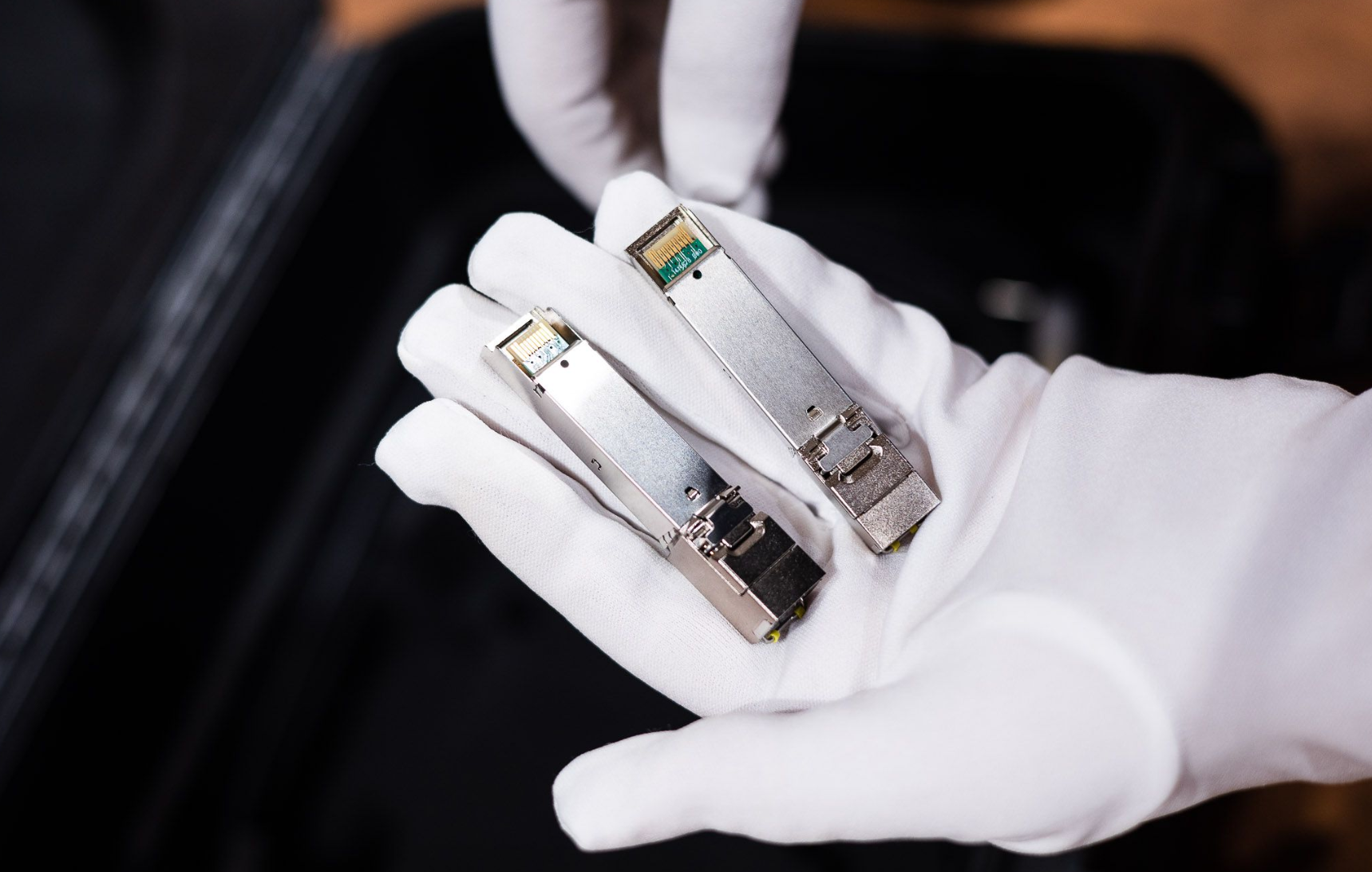

The Extreme Switch: Network Perfection
Our evaluation included the Taiko Extreme Switch, an audiophile-grade design specifically engineered to replace standard network switches. Featuring single-input, single-output SFP+ slots, it accommodates RJ45 or optical fiber modules for matching transmission cables. Crucially, it operates exclusively at Gigabit/1000Mbps transmission specifications—100Mbps equipment will not function. Users who enjoy cascading switches must note this limitation.

The Extreme Switch pairs with a dedicated Extreme DC Power Distributor, featuring internal filtering for multiple devices. Three different filtering options produce distinct sonic characteristics, allowing users to tailor performance to their preferences and equipment. It accommodates any device requiring 10A-25A current. During switch research, Taiko discovered that power supply noise interference exceeds that from routers and switches, prompting development of the Extreme DC Power Distributor. It provides over 80dB noise filtering, with 64 carefully selected filter components—each affecting sound quality.

The Roon Core Revelation
Beyond serving as a music file transport, the Extreme's most crucial function involves executing Roon Core computations—arguably the most overlooked aspect of digital audio. Roon users must pay careful attention to Roon Core placement. Multiple experiments replacing Roon Core execution equipment—including dedicated NAS systems, audiophile music servers, and work laptops—revealed differences comparable to changing an entire audio component. If you're a Roon user, this knowledge is essential. The simplest approach involves installing Roon Core on different computers for direct comparison—the differences may astonish you.
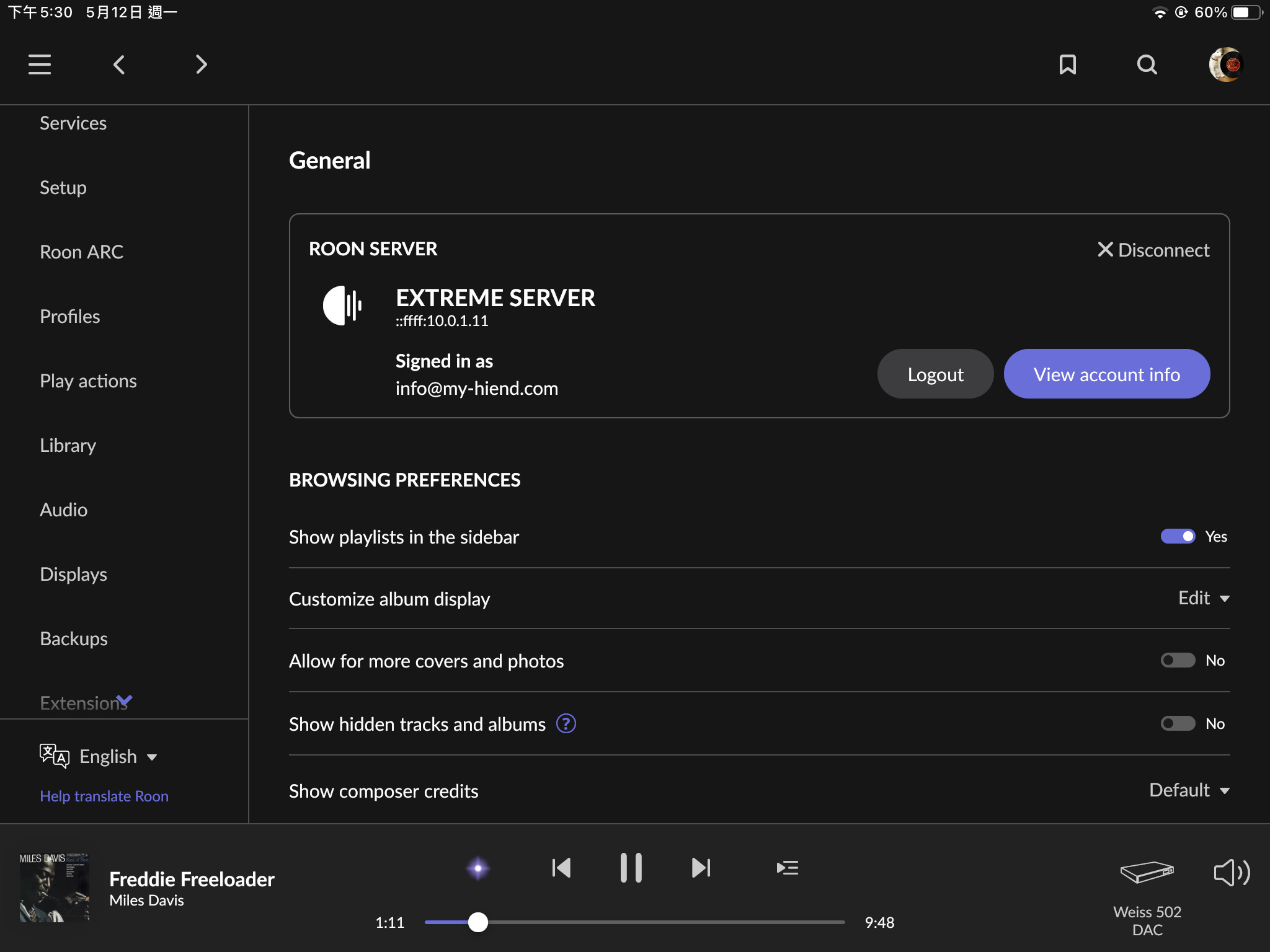
As Roon's functionality expands, its resource consumption increases correspondingly. The Taiko Audio Extreme was conceived from inception as a Roon Core executor, naturally resulting in more rigorous, professional design. Our testing fully confirmed this advantage.
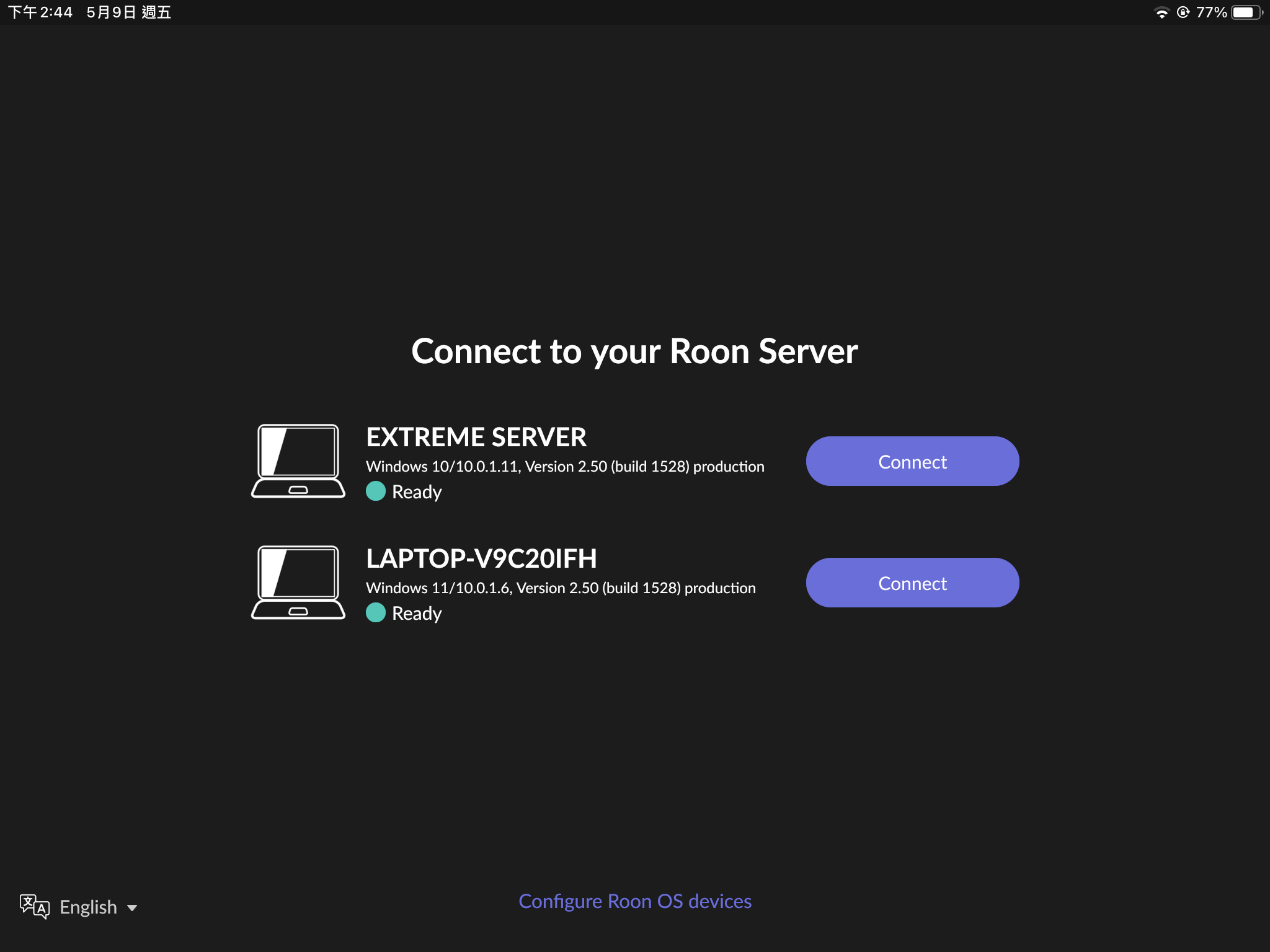
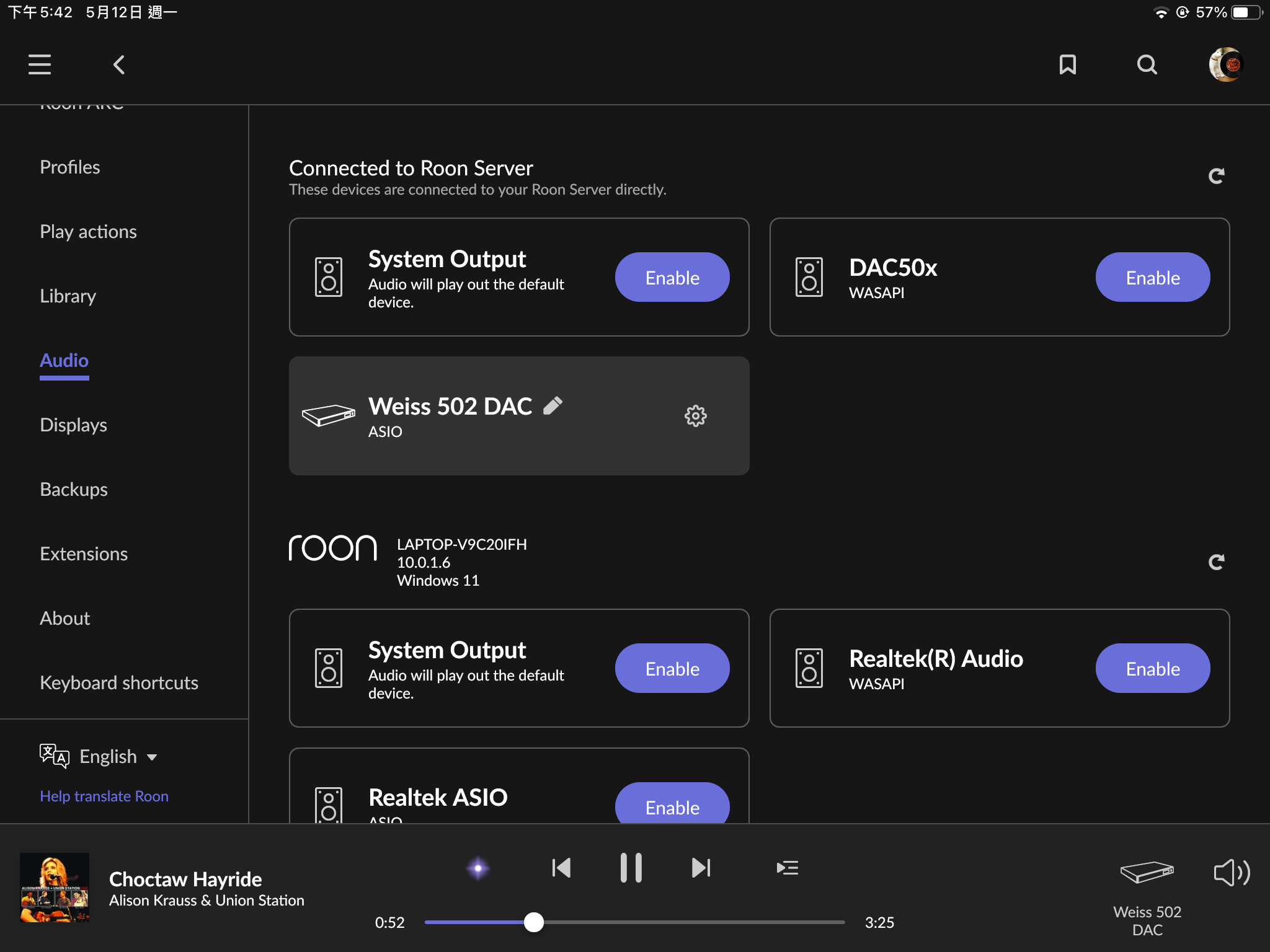
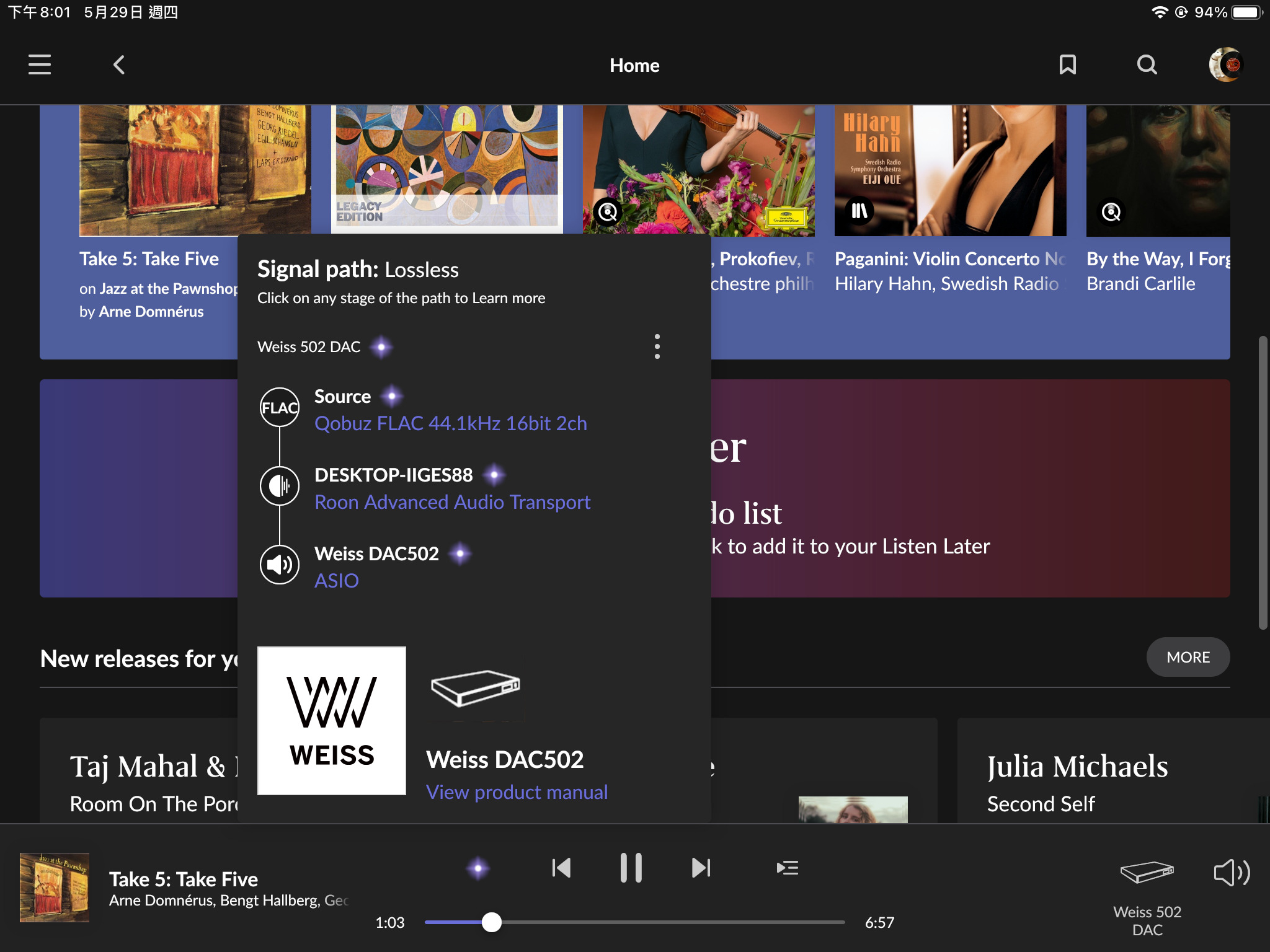
Listening Impressions: Musical Revelation
Brandi Carlile - "By the Way, I Forgive You": The Extreme's performance revealed several outstanding characteristics. The background silence achieved extraordinary levels, creating remarkably transparent and clean musical presentation. Image density appeared particularly focused while maintaining lightness without stickiness or heaviness—high-density presentation that effortlessly fills the listening space. The Extreme requires no volume increases to find passion; at comfortable, listenable levels, musical agility and natural, vivid dynamic contrasts emerge clearly. The Taiko Audio Extreme Music Server thoroughly transformed our network digital streaming capabilities—performance we had never previously experienced.

Michel Jonasz - "La Fabuleuse Historie De Mr Swing": Comparing files stored on the Extreme's internal SSD (WAV 44.1/16) versus network streaming (Qobuz FLAC 44.1/16) revealed slightly superior playback quality from internal files, with minor improvements in detail resolution. This may reflect file format differences or network transmission factors, but demonstrates remarkable sensitivity in revealing these distinctions. The Extreme presents exceptionally balanced frequency response—from highs to lows, everything sounds transparent without sluggishness. Live recordings particularly benefit, sounding vivid and natural, as exemplified in "Poussy" where instrumental grandeur and the singer's emotional vocal inflections achieve profound depth.
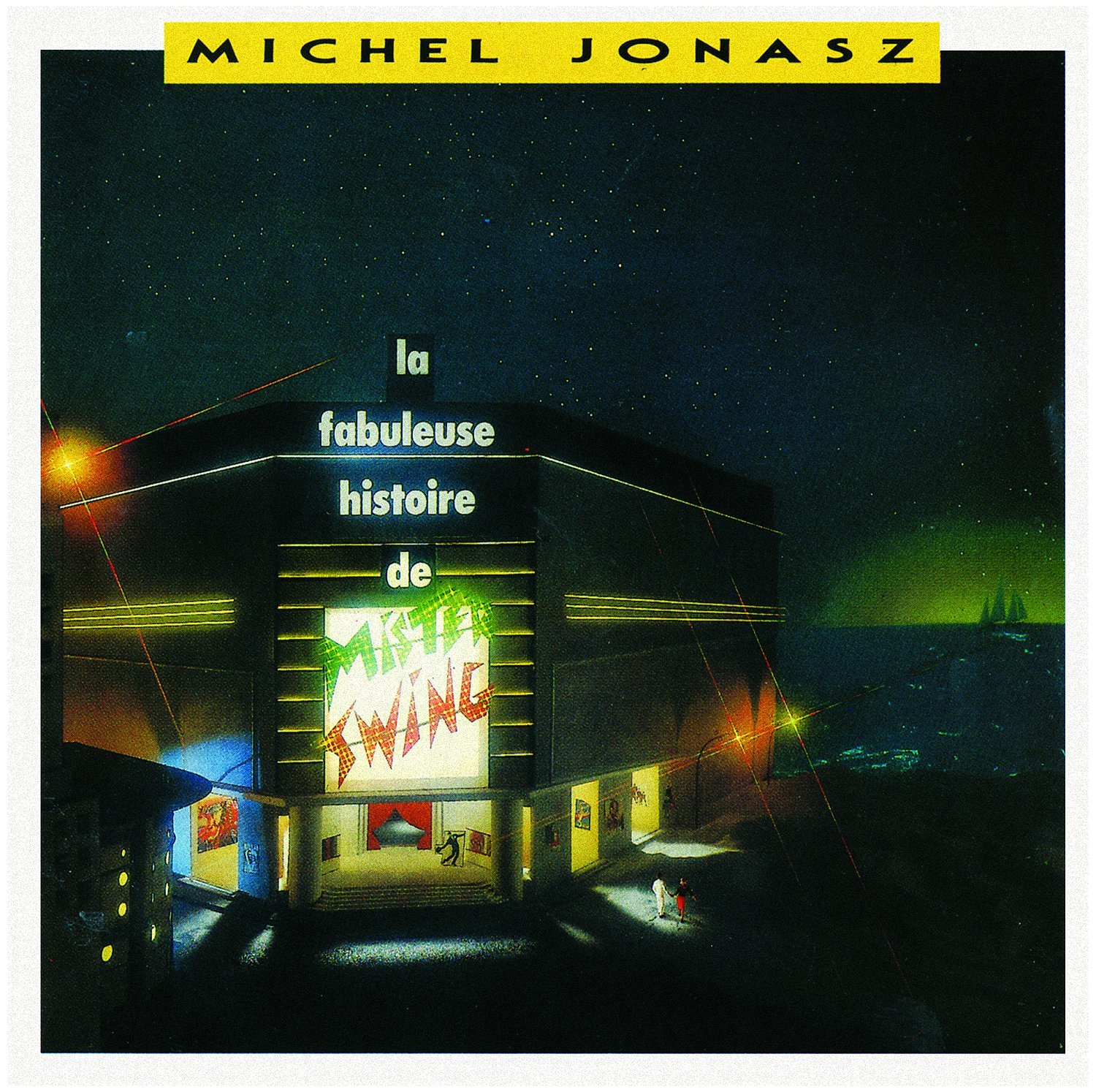
Carolin No - "Time After Time": The background silence impressed immediately, with instruments displaying focused stability. Guitar strings felt comfortable and pleasant, with clean, beautiful tone—simple notes creating profound impact. String plucking revealed outstanding dynamic expression, with lively, vivacious sound following elegant, gentle hand movements. The instrument's texture appeared distinctly prominent, with notes exhibiting lovely luster at their conclusion while maintaining excellent dynamics and brilliant, shimmering beauty that directly captures the heart.

Vocals conveyed substantial weight despite light, shallow delivery, maintaining focused fullness throughout without allowing the gentle voice to waver. Instead, a resilient emotional atmosphere persisted until song's end. Vocal lines displayed remarkable richness and variation—sometimes powerful and direct, presenting lyrics without reservation; other times winding with enchanting tenderness, revealing intricate vocal details. Even in uncomplicated songs, the simplest approach yielded the most colorful, vibrant results.
Bailey Rushlow - "More Hearts Than Mine": Piano sound through the Extreme system felt particularly beautiful and prominent, with clean, bright tone and distinct, full note articulation. The obvious keyboard touch sensation made the sound more three-dimensional. Though high and light, the piano retained sufficient force and focused intensity, leaving clear impressions while maintaining stability despite slight height. Particularly forceful passages added considerable dynamics and dramatic tension, enhancing musical movement while rendering piano tones more beautiful.

Background strings appeared relatively gentler without being easily overlooked, displaying elastic and resilient lines throughout. Sometimes soaring in the highs, sometimes deep and rich, all transitions flowed silk-smooth, undoubtedly enhancing the composition. From distant to near, front to back, rich layers of ups and downs emerged, slowly building from the background in beautiful, clean presentation until vocals became prominent, revealing complete, unreserved voice presentation. Instrument and vocal pairing felt multiplicative rather than additive, stacking excellences upon each other.
Damien Rice - "9 Crimes": Instrumental performance impressed equally, with prominent piano sounds. The opening's deep tones spread like ripples with each keystroke, substantial sound waves expanding outward without interference, slowly and quietly extending throughout space, creating a weighty, pitch-black background. Piano became like nighttime whispers against this quiet backdrop—prominent yet not intrusive, displaying clear dynamics from left to right, high to low, creating immersive presence as if enveloped by piano sound.

String entry created the sensation of backgrounds being pulled open—still pitch-black and deep, but more spacious and expansive with stronger presence. The music suddenly resembled a vortex, drawing listeners into the sonic canvas. Against this completely open background, male vocals appeared deep while maintaining good separation from the background without mutual blurring. Female vocals displayed greater lightness with lustrous edges in the low frequencies—though remaining focused and full, they felt delicate and ephemeral, bringing out the song's breathless atmosphere, naturally encouraging slower breathing while gently experiencing everything the music offered.
Seven Core Design Pillars of the Taiko Audio Extreme Music Server
● Dual-CPU Architecture: Custom dual-CPU division of labor simultaneously achieves optimal sound reproduction alongside functional and performance operation, eliminating negative sonic impact from Roon computational tasks.
● PCIe Storage Design: Employs sonically superior PCIe SSD interfaces connecting directly to CPU without passing through DMI. Taiko achieves speeds exceeding standard SSDs by over 4x, eliminating latency impact while further reducing noise. Supports 2TB-24TB with abundant capacity.
● Precision High-Speed Memory: Custom-manufactured with rigorous selection using only Grade-A products with tolerance under 1%, superior performance, lower operating temperatures. Taiko employs 12 DIMM memory modules (4GB x 12 = 48GB) providing enormous bandwidth with extremely low refresh noise levels.
● Shortest Path, Lowest Latency: Taiko avoids upsampling processing to pair with the finest R2R and Sigma/Delta DACs under bit-perfect streaming with minimal system latency for optimal sound quality. Taiko's self-developed operating system is entirely dedicated to music server operation.
● Multi-Stage High-End Linear Power Supply: 400W linear supply entirely developed and manufactured by Taiko, specifically designed for Extreme Music Server requirements using premium Mundorf and Duelund capacitors totaling 700,000µF with only the most neutral market components. Chokes from Lundahl are personally auditioned and selected by Taiko's development team.
● Cooling System: Custom 240W passive cooling system entirely without active components, no fans, no operational noise. Pure copper heatsinks provide twice the performance of aluminum alternatives.
● Chassis Design: Aerospace titanium-aluminum alloy construction with machine-perforated top cover featuring over 6,000 holes providing waveguide functionality against RFI. Taiko employs pure copper and Panzerholz materials throughout to eliminate potential vibration interference.
The Taiko Audio Extreme Music Server represents more than technological achievement—it embodies a philosophical approach to digital audio that prioritizes musical truth above all else. In an era where streaming dominates music consumption, the Extreme proves that digital sources can achieve the emotional connection traditionally reserved for the finest analog rigs.

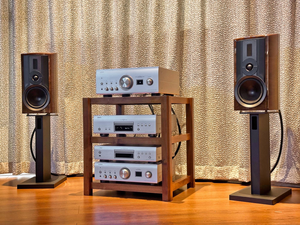
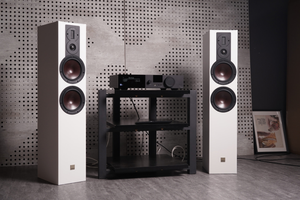
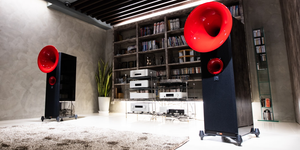
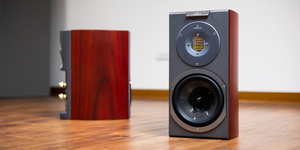
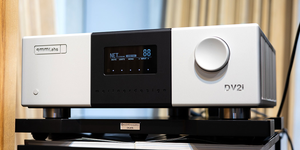
Comments